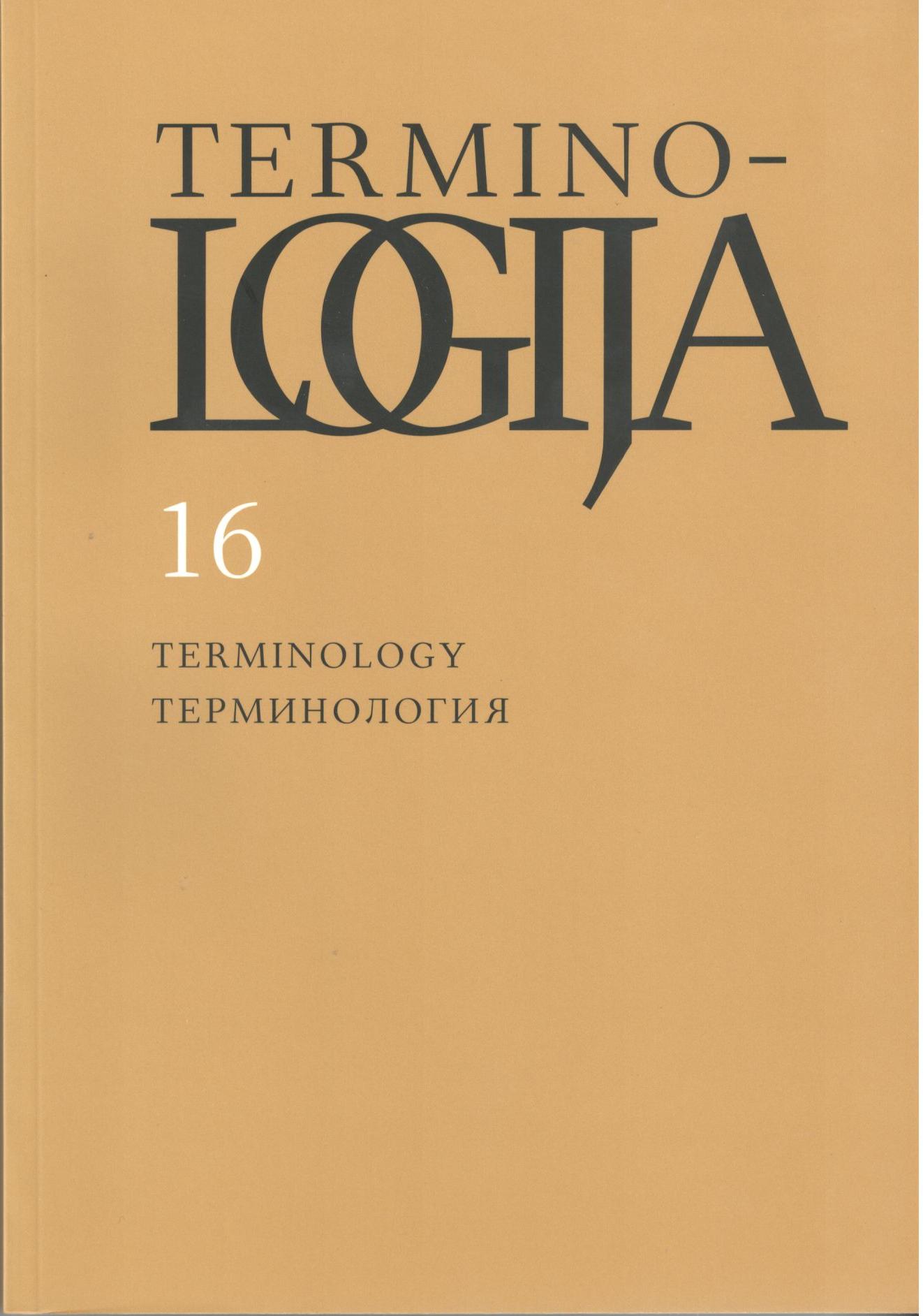Varpo medicinos straipsnių terminai
Terms used in articles on medicine in Varpas
Author(s): Palmira ZemlevičiūtėSubject(s): Language and Literature Studies, Lexis, Semantics, Descriptive linguistics, Baltic Languages, Health and medicine and law, Philology
Published by: Lietuvių Kalbos Institutas
Keywords: medical terms; borrowing; hybrid; group of concept;
Summary/Abstract: This article deals with the meaning and origin of terms in articles on medicine published in monthly newspaper Varpas (1889–1906) as well as with the fate of these terms in modern medical terminology. The newspaper, which dealt with various issues of literature, politics and science published fifteen articles on anthropology, bacteriology, pharmacology, hygiene, clinical medicine and other fields of medicine. The most active authors of these articles were doctors Julius Aleksa, Juozas Bagdonas, Vincas Kudirka, Mikalojus Kuprevičius, Petras Matulaitis and Stasys Matulaitis. Doctor Kuprevičius was the first to raise theoretical issues of terminology. He was encouraging doctors to use not borrowed, but Lithuanian words, to consider more seriously folk terms of medicine when creating Lithuanian medical terminology and to use words of the living language. Terms from the articles on medicine fall into seven groups of concepts: medical conditions; actions, processes, conditions and features; parts of the body, organs and their fluids; healing measures and other measures; persons; sciences and institutions. Sixty percent of medical terms are words and word-combinations of Lithuanian origin. Borrowings and terms of mixed origin (one-word hybrids and complex terms with elements of different origin) make up twenty percent each. The authors of these articles most frequently used terms of Lithuanian origin. Some of them have become terms of modern medical science. Usually they are old words known from the living language, such as akis (eye), džiova (tuberculosis), ligonis (patient), sveikata (health). Some terms now name other concepts. Quite a lot of terms of Lithuanian origin (mostly names of parts of the body and organs and names of diseases) did not take root in the modern language of medical science. Some of these terms were words from dialects or old written sources (this can be seen from the Dictionary of the Lithuanian language), other terms could have been created by the authors of articles (dirgsnė (nerve), liginamasis (patient), sunkė (artery)). The majority of borrowings came from Greek as well as Latin and Slavic languages, only a few – from French, German, Arabic and other languages. The meaning and form of some terms of anatomy, symptoms and progression of an illness and other fields have remained unchanged until today. Some of the borrowings were Lithuanized. Being short of appropriate Lithuanian terms doctors also used terms which were not Lithuanized. Borrowings from Slavic languages were used frequently, but most of them did not become established in Lithuanian medical terminology and now are treated as barbarisms. As can be seen from the Dictionary of the Lithuanian language the majority of them were known in the vernacular. One-word hybrid terms are rare. The majority of them are not used in the modern language of medicine. Usually one part of them is of Slavic origin, for instance kamaraitė (now anga or ertmė (cavity)). Some terms in the articles on medicine had variants and synonyms. Lithuanian orthography at the time of Varpas was not fully settled, therefore some terms were spelt differently by different authors (sometimes even by the same author). Frequently the same concept had a few names. In some cases borrowings had their Lithuanian equivalents presented in brackets and on the contrary. It was common in articles on medicine for doctors to present Latin names next to Lithuanian terms, for instance kolera – cholera asiatica. These articles were aimed at common people as well as specialists. Writing popular articles on medicine doctors cared not only about healing, but also about education. The terminology of these articles shows that their authors knew language rather well, cared about it and had their input in the creation of Lithuanian medical terminology.
Journal: Terminologija
- Issue Year: 2009
- Issue No: 16
- Page Range: 154-185
- Page Count: 32
- Language: Lithuanian

